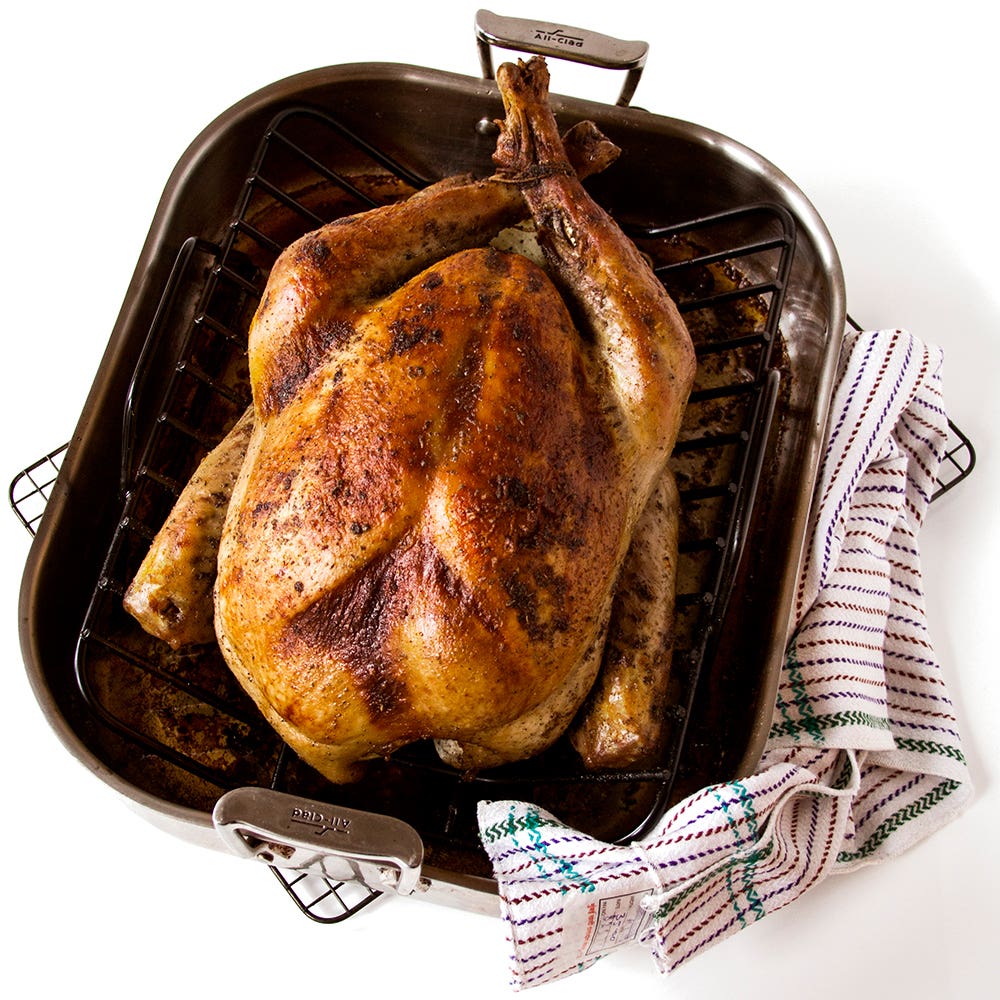
Thanksgiving Roast Turkey
This recipe comes from a true Kentuckian, Rena McClure, who has lived there her whole life. Serve it with cornbread dressing cooked in a cast-iron skillet on the side.
What exactly is a heritage turkey? According to the American Livestock Breeds Conservancy, it's a naturally mating bird with a slow growth rate that spends most of its long life outdoors. (By contrast, industrially raised turkeys live in cages, are bred to grow quickly, and can reproduce only through artificial insemination.) In terms of flavor, a heritage bird is worlds away from the dry, tasteless turkeys most of us have grown up eating on Thanksgiving.
Unlike other turkeys, heritage birds live long enough to develop a layer of fat beneath the skin, which imparts a rich flavor to the meat. Mary Pitman, of Pitman Farms, says that they also "have larger thighs and legs because they still run and fly"; that produces especially dark, juicy meat from those parts. There's no better time to switch to these sustainably raised animals; as farmer Frank Reese, a tireless advocate for heritage turkeys, says, "The best way to save these historic breeds is to eat them." We couldn't agree more. Below are tips and sources.
Skip the brine.
Mary Pitman points out that the "real, authentic taste of a turkey" comes through when the turkey hasn't been brined.
Wrap it up.
Heritage breed birds, unlike industrially raised turkeys, have breast meat proportionate to the rest of their bodies. Although that's good news for authenticity and flavor, the more modest-size breasts can dry out quickly; to offset that effect, barding (wrapping the bird with bacon or pancetta), topping the breast or the whole turkey with oil-rubbed paper or cheesecloth, or rubbing butter under the skin will help keep the meat moist.
Experiment with different preparations.
Roasting may be the traditional cooking method, but heritage turkeys, owing to their robust flavor, cook well when braised in turkey or chicken stock, white wine, or even beer. They're also delicious when fried in peanut oil.
Shorten the cooking time.
Because heritage turkeys are almost always smaller than industrially raised birds, they require less time in the oven. When a thermometer inserted into the thigh reads 165 degrees, remove the bird.
Cook carefully.
SAVEUR kitchen director Hunter Lewis recommends crisping the bird at 500 degrees for 20 minutes, then roasting at 325 degrees. As white meat and dark meat cook at different rates, some people cook the breast and legs separately.
Consider game recipes.Before deciding how to prepare your heritage bird, check out recipes for such game birds as guinea hen and pheasant, which, like heritage turkeys, are naturally lean and pair well with earthy flavors like herbs and bacon.
Purchase heritage turkeys from Good Shepherd Turkey Ranch, Heritage Foods USA, Local Harvest, Pitman Farms, or Slanker's Grass-Fed Meats.
The ALBC also lists farmers around the country who raise heritage turkeys; they can be contacted directly.
Keep Reading
Continue to Next Story











